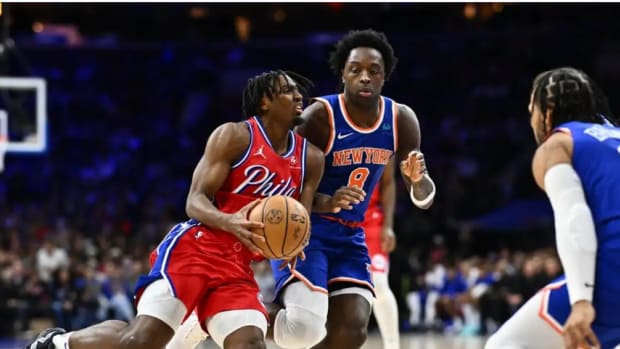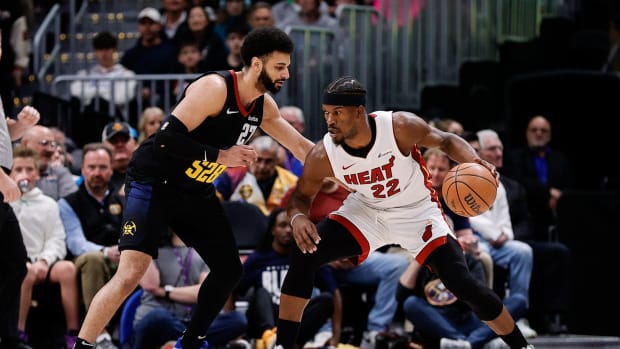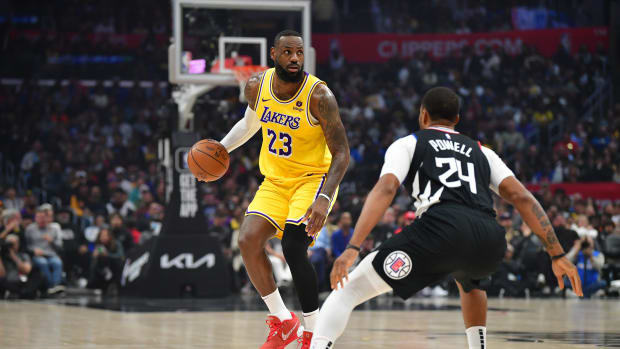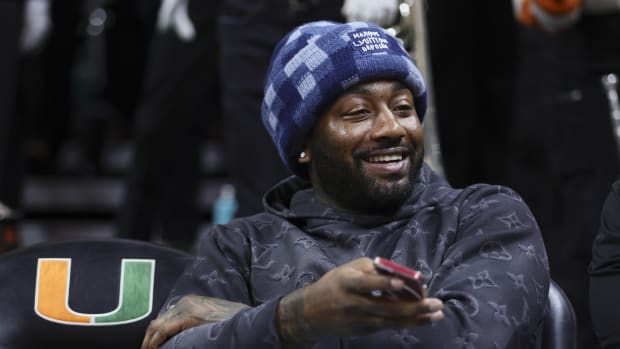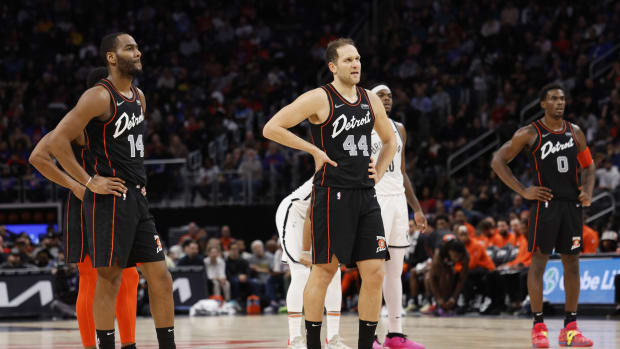NBA Rookie Rankings: Redrafting the 2021 Lottery
It’s usually prudent to wait multiple years before taking stock of a draft class, but we’ve waited long enough as the end of the regular season approaches.
The class of 2021 has now received five months of evaluation, and while we can’t provide perfect prognostication for the next decade, there is a significant sample size on hand. And this group looks to be one of the most impressive in recent memory. Evan Mobley will be no stranger to the All-Star game in the 2020s. Cade Cunningham and Jalen Green could battle for All-NBA honors. The list of potential All-Stars runs over a half dozen long.
So how would the most recent draft shake out if the lottery teams were given a mulligan? Let’s redraft the first 14 picks in the loaded 2021 NBA draft.
1. Detroit Pistons – Evan Mobley
There’s an urge to stick with Cunningham here given his position and the crop of big men slated to populate the top of the 2022 draft. It’s a compliment to Mobley that we’re eschewing those concerns. Cleveland’s rookie big man should rack up a half-dozen All-Defense appearances over the next decade given good health, and his offensive ceiling is greater than we give him credit for. Mobley’s points per post up numbers match Giannis Antetokounmpo. He pairs his long limbs with touch around the foul line, and he’s even beginning to expand his range toward the arc in recent weeks.
Mobley is already a force on both ends. He’s one of seven rookies in NBA history to average 2.5 assists and 1.5 blocks per game. His ceiling as an All-NBA talent is closer than we may think.
2. Houston Rockets – Cade Cunningham
Jalen Green looks increasingly comfortable in nontransition offense, but even his recent development isn’t enough to dissuade Houston from wanting Cunningham here. Perhaps the Oklahoma State product isn’t the league’s most explosive guard, but he checks every other box necessary for a leading man. He’s a precocious and sometimes inventive passer who can score from all three levels of the floor, and he’s a stout defender with a large frame.
Perhaps most encouraging is Cunningham’s attitude and presence. He’s an intense competitor who quickly established respect in Detroit, bringing an identity to the franchise in short order. Houston isn’t devoid of talent, yet its rebuild still feels like it’s on shaky ground. Cunningham would change that in short order.
3. Cleveland Cavaliers – Scottie Barnes
Cleveland is a big loser in this exercise as it misses out on its star center, but Barnes isn’t exactly a poor consolation prize. He’s a physical force with more touch as a shooter than previously assumed, and he has a burgeoning skill set as an isolation scorer. Talent aside, this is also a sensible fit for Barnes. He can slide in seamlessly on the wing, pairing with Darius Garland and Jarrett Allen to give Cleveland an impact player on all three segments of its roster.
4. Toronto Raptors – Jonathan Kuminga
Masai Ujiri has built up trust in Toronto, and I could see him springing out of the box once again here in order to snag Kuminga. I’m not so sure this Toronto team would want to turn over a large share of possessions to Jalen Green each night, and in Kuminga, the Raptors receive almost the opposite. Kuminga thrives as a low-volume player in Golden State, streaking to the rim as one of the league’s most efficient cutters. With Fred VanVleet and Gary Trent Jr. soaking up a significant share of backcourt possessions for the Raptors, adding an athletic marvel on the wing in Kuminga seems right up Toronto’s alley.
5. Orlando Magic – Jalen Green
Orlando gets a mulligan here and opts to take the other Jalen with the No. 5 pick. No offense to Jalen Suggs, but Green is in another class in terms of future potential. And we’re beginning to see his otherworldly athleticism translate into impressive play. Green is averaging 17.8 points per game on 47/37/74 shooting splits since Feb. 1, showing far more than his ability to finish at the rim. Green creates significant separation on step-back triples, and he seems to have unlocked something as a mid-range shooter against sagging defenses. Pairing Green with an impressive frontcourt would perhaps be the pathway to a brighter future in Orlando.
6. Oklahoma City Thunder – Josh Giddey
If it isn’t broken, don’t fix it. Giddey looked comfortable on an NBA court from his opening weeks as a rookie, and there’s perhaps more scoring upside here than we’re acknowledging. Regardless, Giddey’s skill set will translate to a career as at least a regular starter for years to come. He’s the most creative passer in his class who loves to push the pace in transition, creating a flood of open threes for the rest of Oklahoma City’s roster. There’s a bit of a Lonzo Ball effect at play here, where Giddey’s low-volume nature allows him to pair comfortably with nearly any backcourt partner. Giddey and Shai Gilgeous-Alexander aren’t the most natural pairing, but they’re an effective one as the Thunder (hopefully) look to turn the corner in 2022–23.
7. Golden State Warriors – Franz Wagner
I’m slightly salivating at the idea of Wagner on the Warriors. He’s the exact kind of heady, malleable player that could serve as an effective cog in Golden State’s machine, with a well-rounded game that can serve a variety of purposes. He’s a solid-enough three-point shooter who would thrive as a small-ball trap breaker, and it’s not hard to envision him pushing the ball in transition like a young Draymond Green. You can argue Wagner fell too far in this draft. Golden State gets a steal here at No. 7.
8. Orlando Magic – Herb Jones
There’s the temptation to turn the Magic into Houston-East here, but the strong play of Wendell Carter Jr. and (to a degree) Mo Bamba leaves Jones as the pick here. The second-round pick has been a revelation as a rookie in New Orleans, where he serves as a turnover-generating extraordinaire with a nascent offensive skill set. No rookie sits higher in 538’s RAPTOR rankings. He sports a better net rating than Mobley and Barnes. I understand there is some limited upside here given Jones will be 24 next season, but at this point in Orlando, is a sure thing so bad? Jones is a tide that lifts all boats. His presence would be valued for whatever prized rookie arrives in Orlando next season.
9. Sacramento Kings – Alperen Şengün
Let’s evaluate a pair of options here.
Option A: Draft a third guard in the lottery (Davion Mitchell), create a backcourt log-jam, then ship your best asset (Tyrese Haliburton) on a rookie deal for a frontcourt player (Domantas Sabonis).
Option B: Draft a frontcourt player (Alperen Şengün), keep your pair of backcourt lottery selections (Tyrese Haliburton and De’Aaron Fox).
This is an easy one, right? No offense to Sabonis, who is a terrific offensive player. But as a simple value proposition, it’s hard to defend Sacramento’s process. Şengün is effectively Sabonis-lite as a rookie, showing creativity that may be truly Jokić-esque. And while Fox has been better without Haliburton alongside him, I’m not entirely convinced that the backcourt duo wasn’t workable long-term. You can argue that the contracts alone make Haliburton and Şengün the two most valuable pieces in this quartet. Poor Kings fans. There’s always next year.
10. New Orleans Pelicans – Jalen Suggs
We’ll end Suggs’s slide here at No. 10. but we’d be remiss not to point out some of the more troubling metrics early in his career. He’s one of four players in the last decade to tally 1,200 minutes with an effective shooting percentage worse than 40%, joining Ricky Rubio, Lance Stephenson and Andrew Harrison. He has the fewest win shares of all 249 players to play 1,000 minutes. Of the 138 players with at least 250 drives to the rim, Suggs ranks 133rd.
Suggs should stick as an NBA rotation player as he evolves into a plus defender and passable playmaker. We’ve even seen some encouraging signs of late in the scoring department. Let’s hope Suggs can turn this around, but until further notice, Orlando’s selection is a relative whiff at No. 5.
11. Charlotte Hornets – Davion Mitchell
Mitchell is playing his best basketball of the season of late, including a career-high 28-point effort on Wednesday that threatened to move him up the board to No. 10. There’s still a pretty firm ceiling on Mitchell’s upside as a scoring threat, though even passable shooting splits would provide a major boost to his value as a defensive specialist. Charlotte would also be a nice fit for Mitchell. He could serve as a defensive shield for LaMelo Ball and Terry Rozier in spurts, a role not befitting for actual No. 11 pick James Bouknight. There’s probably a little more upside with Mitchell than some assume.
12. San Antonio Spurs – Josh Primo
Even as the Spurs refuse to outright bottom out, their turn to a youth movement in recent years is likely a worthwhile endeavor. Primo fits that mold perfectly. He won’t turn 20 until Christmas Eve, and his frame could allow him to develop into a destructive force on the wing for years to come. His scoring punch remains, well, nonexistent, but he is beginning to earn some degree of regular rotation minutes on the Spurs. If Gregg Popovich is content building young talent, bringing Primo into the fold wasn’t a bad idea.
13. Indiana Pacers – Ayo Dosunmu
Snagging Duarte at No. 13 was a nice find for the Pacers, though Dosunmu would help even out the profile of Indiana’s roster. The Illinois product is a plus defender who’s found success hounding point guards across the Eastern Conference, and he doesn’t need the same diet of offensive opportunities as Duarte. This isn’t to slight Duarte, who did an impressive job holding down the fort early in the season. But Indiana’s rotation is crowded with guards and wings of a similar skill set. Dosunmu’s defensive profile gives him the edge in this situation.
14. Golden State Warriors – Chris Duarte
I desperately wanted to throw a center onto the Warriors’ roster, though I don’t think we’ve seen quite enough production from Day’Ron Sharpe or Jeremiah Robinson-Earl to make it happen. Instead, let’s tab Duarte, who would be able to fill minutes in Golden State’s rotation from the outset. He’d thrive as a spot-up shooter in Klay Thompson’s absence, and his greatest value would come as a secondary ball-handler when either Steph Curry or Draymond Green is off the floor. Duarte will turn 25 during the 2022 Finals, so this is a player nearing the peak of his value. Yet the whole Light Years philosophy of tripling down on young lottery fliers remains strange. Taking Duarte’s proven production here would be valuable in a playoff run.
More NBA Coverage:































